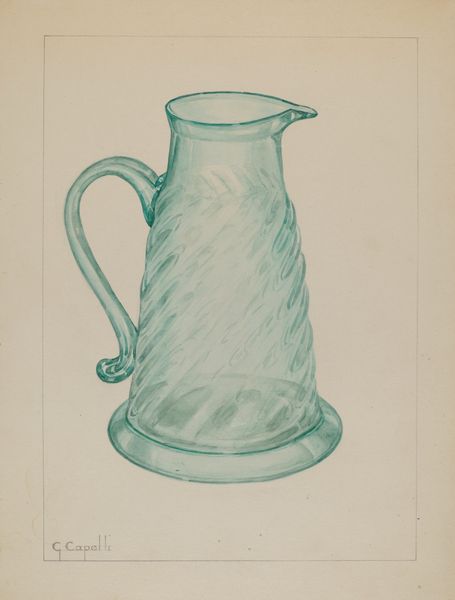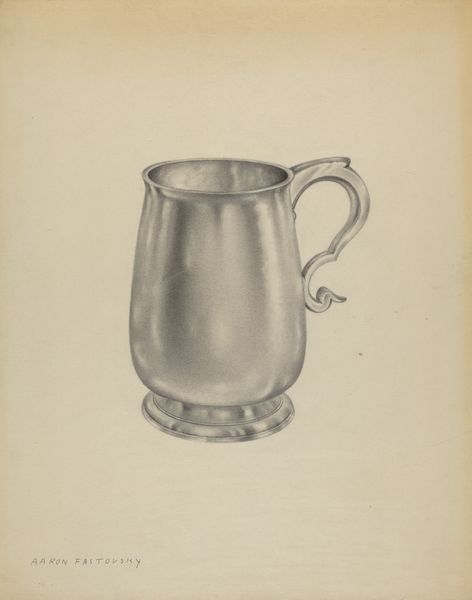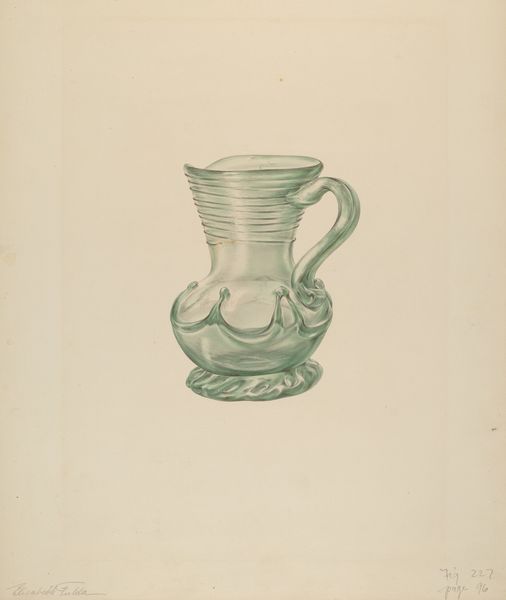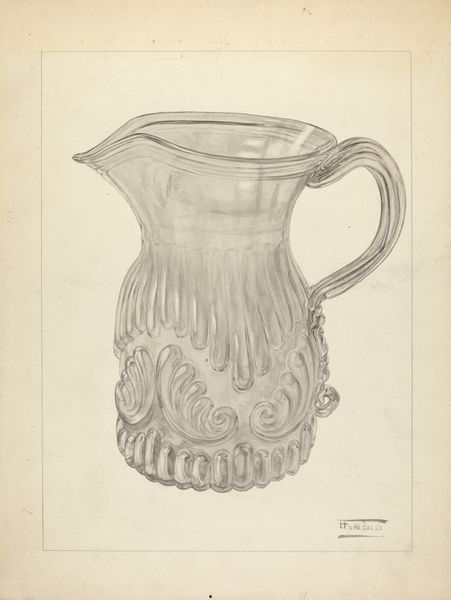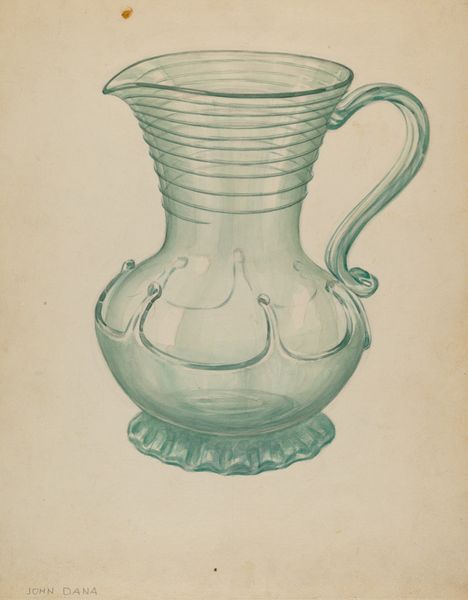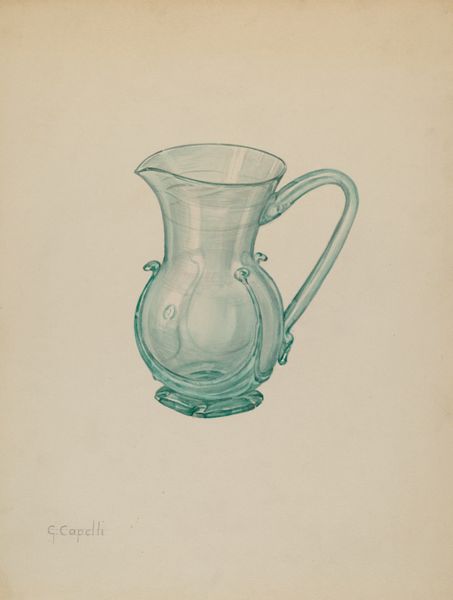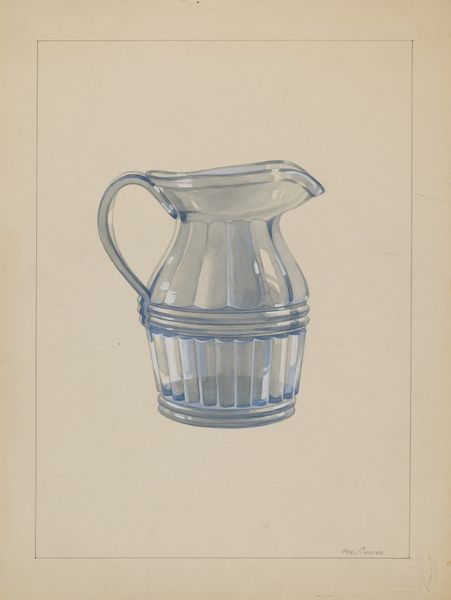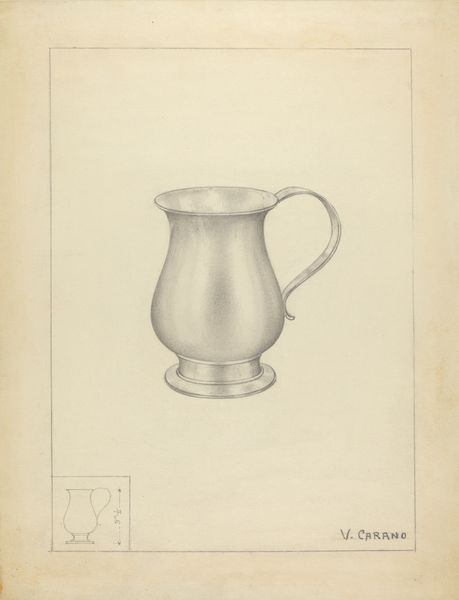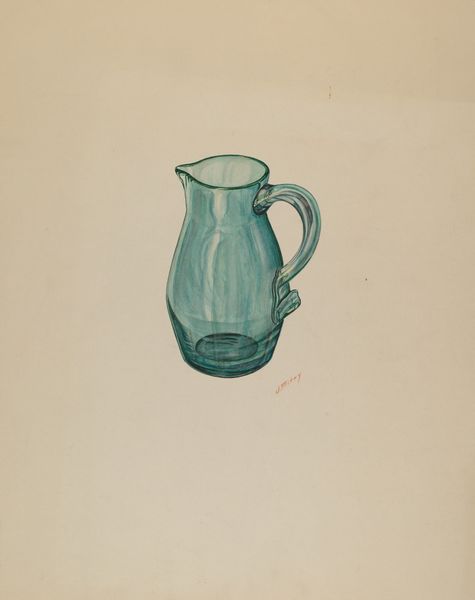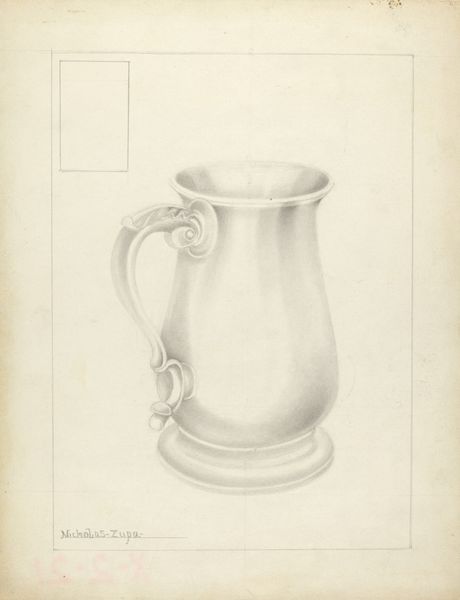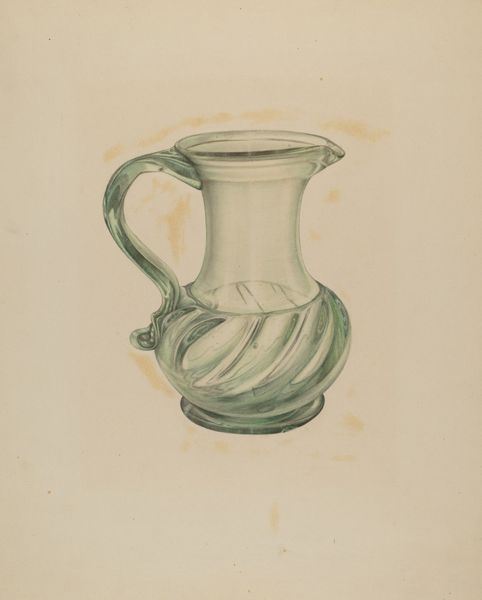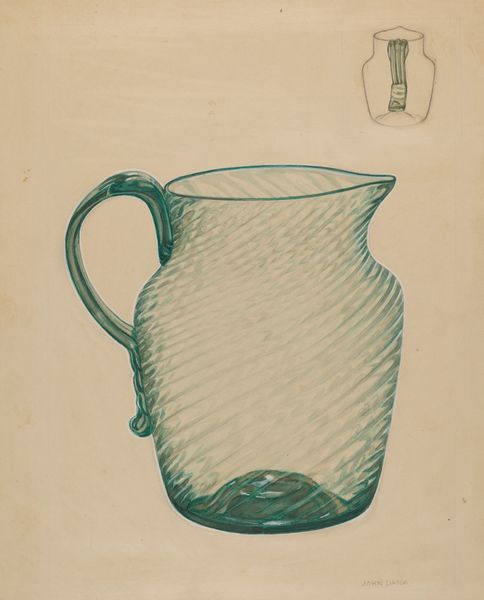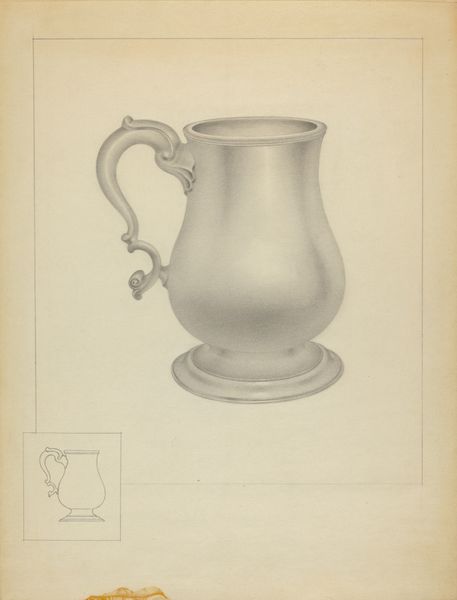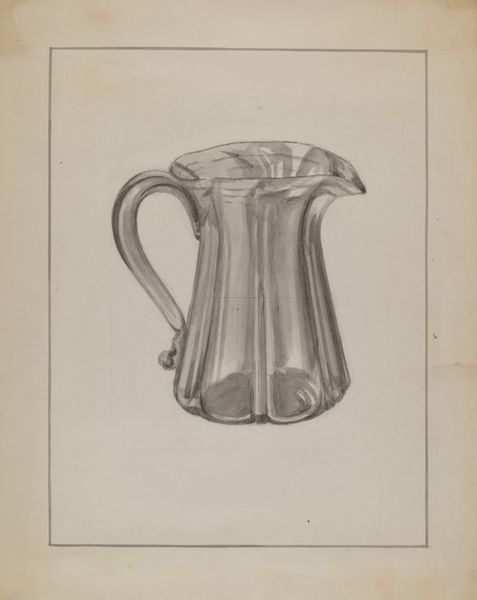
drawing, watercolor
#
drawing
#
watercolor
Dimensions: overall: 30.3 x 22.5 cm (11 15/16 x 8 7/8 in.)
Copyright: National Gallery of Art: CC0 1.0
Editor: This is "Molasses Jug," a watercolor drawing from around 1937 by Giacinto Capelli. The delicate rendering of glass gives it a kind of ephemeral feel. What do you make of this domestic object being given such artistic attention? Curator: It's compelling to consider this "Molasses Jug" not just as representation, but as a record of material production and consumption during the 1930s. The choice of watercolor, often associated with craft or amateur art, elevates the everyday. Consider the labor involved: glassblowing, design, and the distribution networks for molasses. This drawing, a product itself, invites us to contemplate the cycle of creation, utility, and even obsolescence of such an item. Editor: So you're seeing the drawing itself as part of that material cycle, not just an artistic depiction? Curator: Precisely! The materiality of the drawing—paper, pigment, the artist's hand—is integral to its meaning. Is this drawing, perhaps, a critical commentary on the values placed upon handcrafted versus mass-produced objects? Was it commissioned to inspire industrial design, or created in commemoration of threatened local manufacturing practices? Editor: That’s interesting. I never really considered all of the implications behind depicting everyday things like a simple glass pitcher! Curator: Art can expose and celebrate forgotten materials and modes of production. Even seemingly simple objects are testaments to the intricate relationships that exist between labour, commerce, and consumption. Editor: Thinking about art as a piece of our economic puzzle puts a lot of context around pieces I normally might not notice. Thank you!
Comments
No comments
Be the first to comment and join the conversation on the ultimate creative platform.
